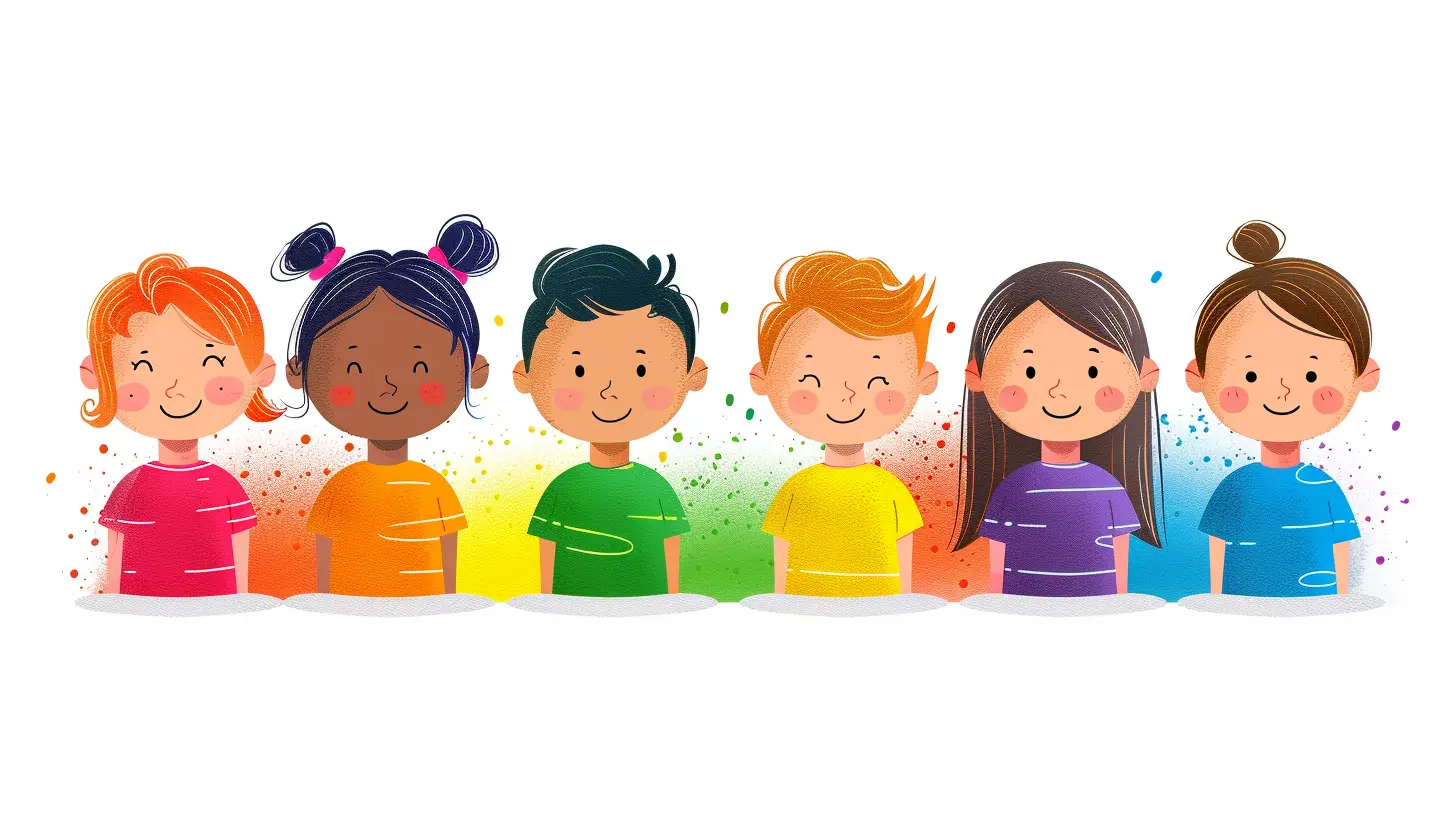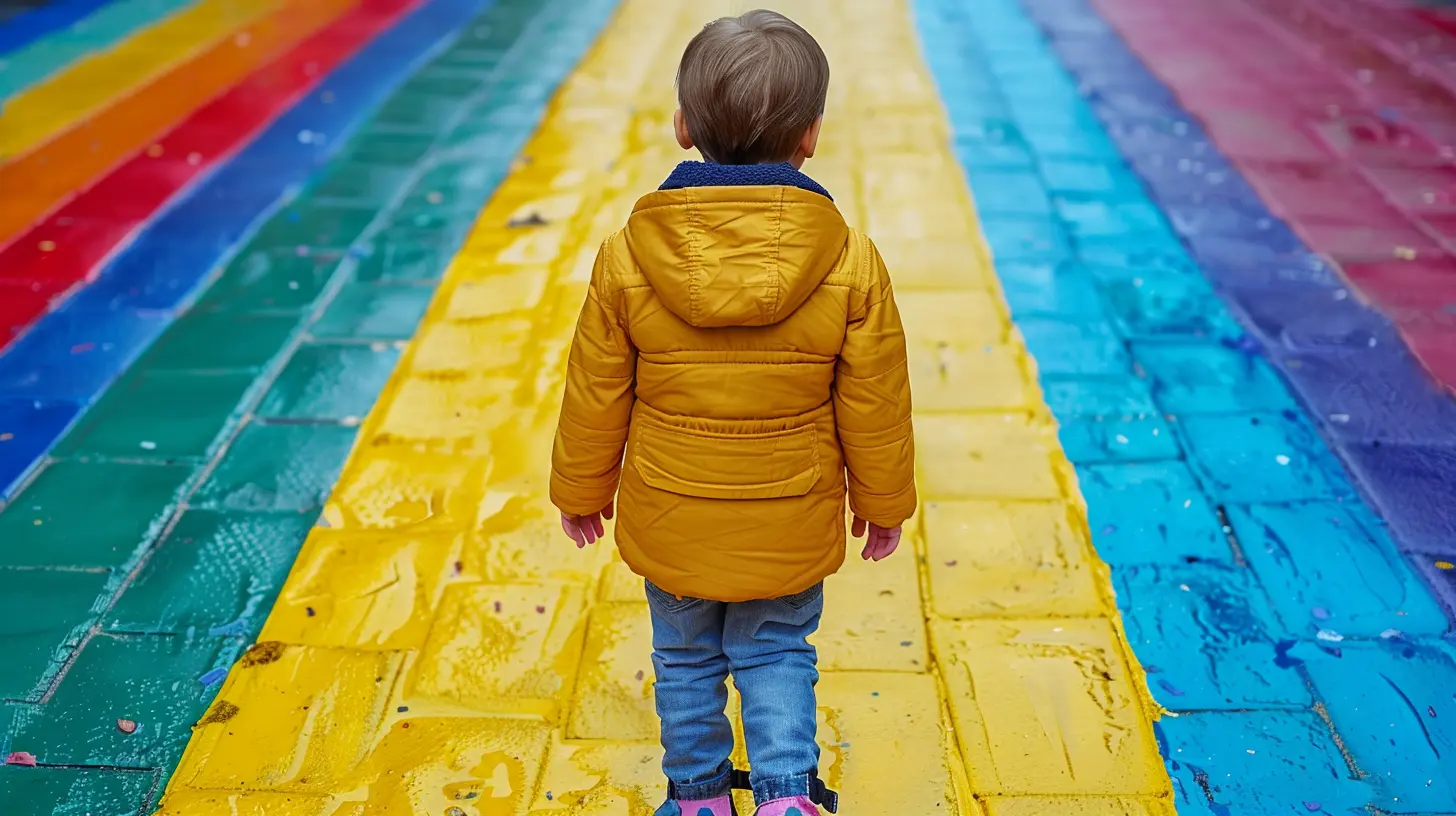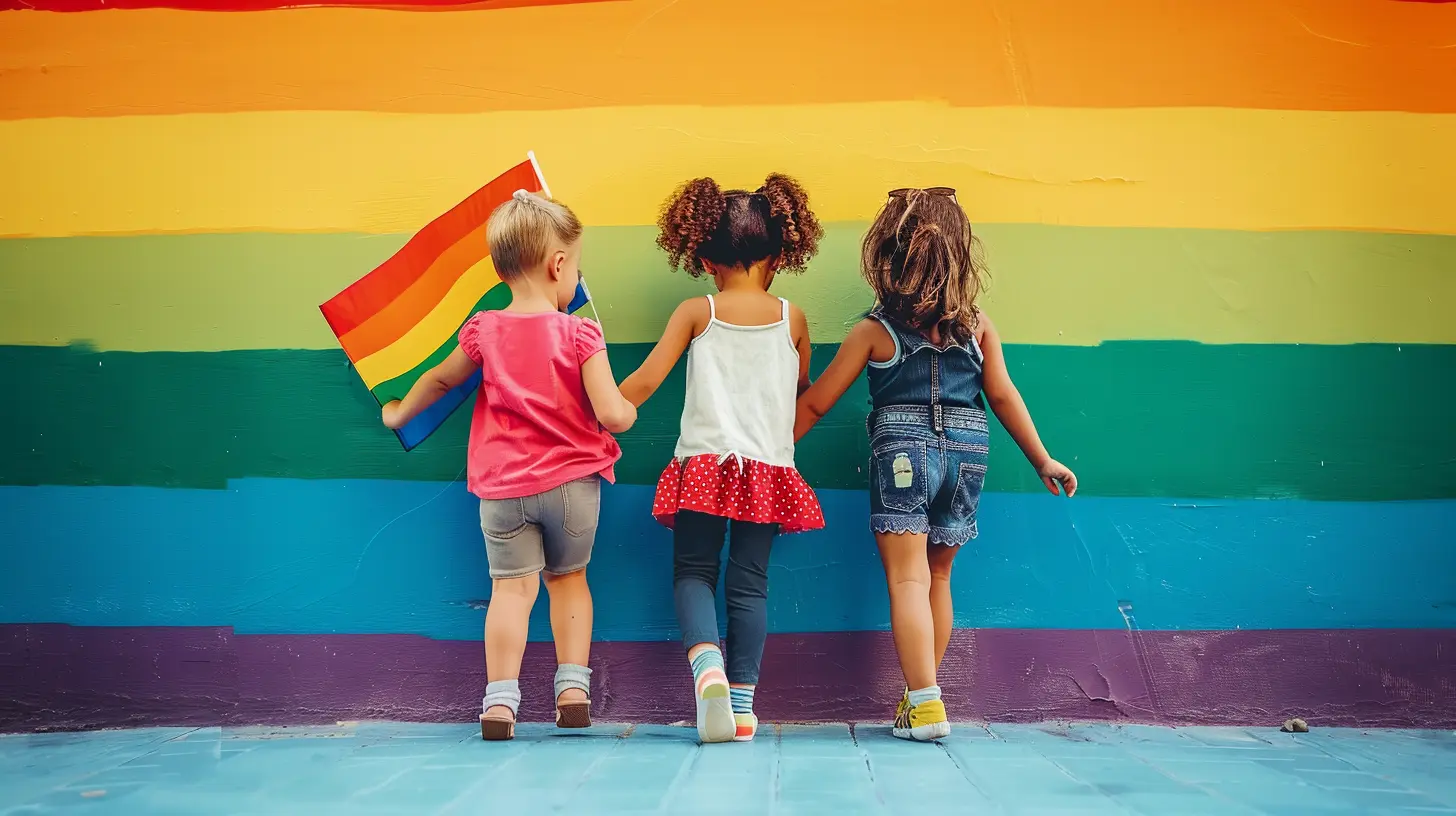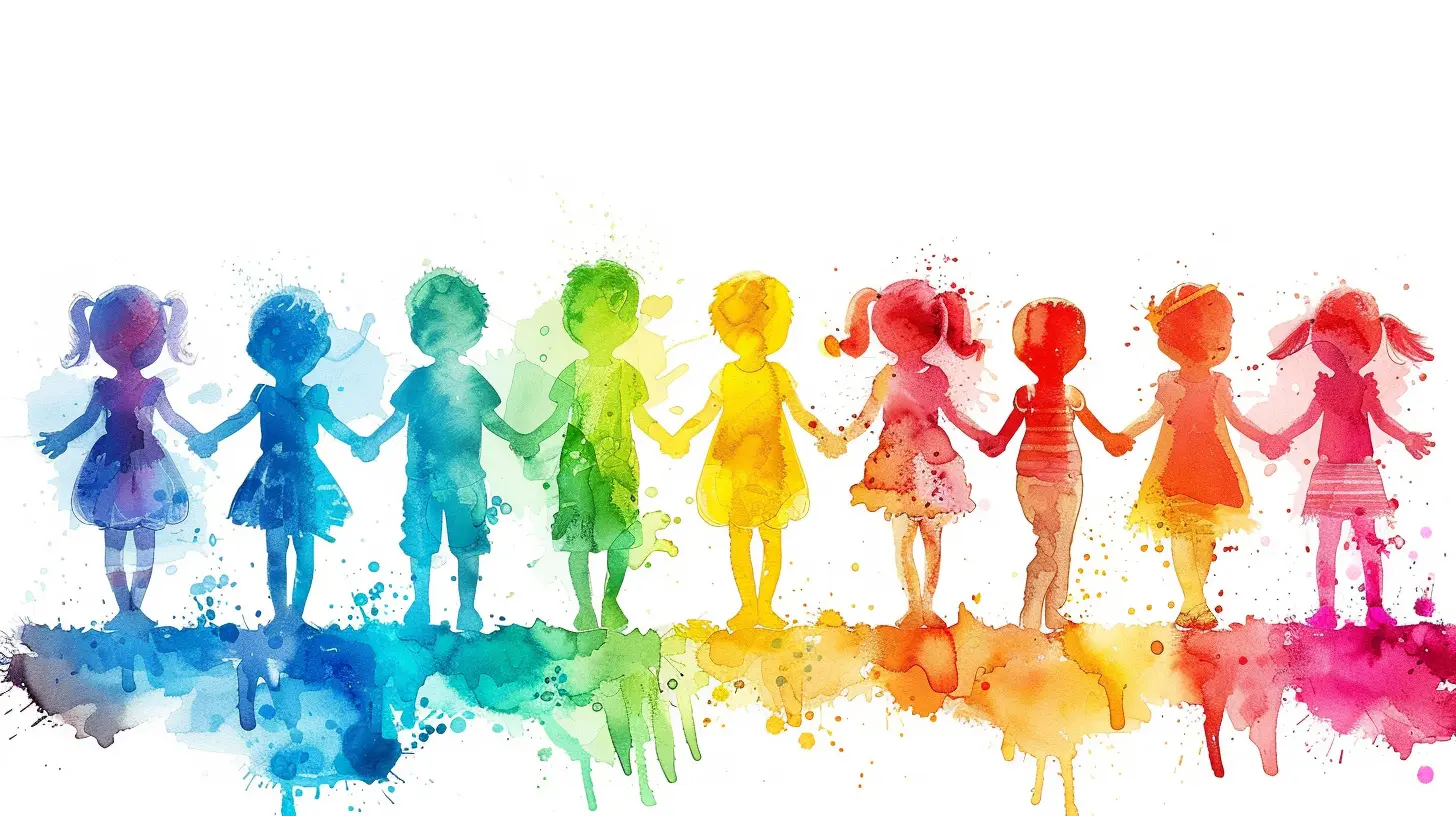9 January 2025
Talking to young children about gender identity can feel like navigating uncharted waters. It’s one of those topics that many parents, guardians, and educators feel unprepared for. But in today’s world, where conversations around gender are becoming more open and inclusive, it’s essential to foster understanding and acceptance early on.
You might be wondering, "How do I even begin talking to a 4-year-old about something so complex?" or "What if I say the wrong thing?" First things first, relax! These conversations don’t have to be complicated or intimidating. In this guide, we're going to break down how you can approach these discussions in a way that’s respectful, age-appropriate, and compassionate.
Let’s dive into the essentials of how to approach gender identity conversations with young children.

Understanding Gender Identity
Before you can talk to a child about gender identity, it's important to have a basic understanding yourself. So, what exactly is gender identity?Simply put, gender identity refers to how an individual personally experiences and identifies their gender. It might align with the sex they were assigned at birth, or it might not. Gender identity is deeply personal and can range across a spectrum which includes but is not limited to, male, female, non-binary, and gender-fluid identities.
For young children, their understanding of gender may be more fluid and flexible than that of adults, which makes early conversations on this topic even more important.
Why Is It Important to Talk About Gender Identity?
You might be thinking, "Can’t kids just be kids? Do we really need to talk about gender identity so early?" The truth is, children start to form ideas about gender from a very young age—even before they can fully articulate it. By age 3, many children can label themselves as boys or girls, and by age 5, they have a strong sense of gender norms, thanks to the world around them.Discussing gender identity with young children helps them understand that there are many ways to express and experience gender. It also fosters empathy, inclusivity, and reduces the chances of bullying or exclusion as they grow up.

When Should You Start These Conversations?
There’s no “perfect” age to start these conversations, but it’s generally a good idea to normalize discussions about gender early on. You don’t need to sit your 3-year-old down for a serious talk, but rather, you can introduce the topic organically as it comes up in everyday life.For example, if your child asks why a boy in their class is wearing a dress or why their friend’s family has two moms, that’s a great opportunity to open up a conversation. Children are naturally curious, and when they ask questions, it’s because they’re seeking understanding.

How to Approach Gender Identity Conversations with Young Children
Now that we’ve established the importance of these discussions, let’s explore some practical ways to approach them.1. Keep It Simple and Age-Appropriate
Remember, kids don’t need the entire history of gender studies. Keep things simple and use language they can understand. For example, if your child asks, “What does it mean to be non-binary?” you could say something like, “Some people feel like they’re not just a boy or a girl, but a bit of both or neither.”The key is to meet them at their level of understanding. You don’t need to use complicated terminology unless they’re ready for it. Simple, clear explanations work best with younger children.
2. Let Their Curiosity Lead the Conversation
One of the best ways to approach these conversations is to let your child’s curiosity guide you. If they ask a question, that’s your cue to start the conversation. Don’t feel the need to overwhelm them with too much information at once. Answer the question they asked, and if they’re interested, they’ll ask more.For instance, if your child asks, “Why does my friend have two dads?” you can respond with something like, “Some families have two moms or two dads, and that’s perfectly okay! Families come in all shapes and sizes.”
3. Use Everyday Moments as Learning Opportunities
Opportunities to talk about gender identity often crop up in daily life, especially in media. Watching TV, reading books, or even going to the playground can present moments where you can naturally introduce the topic.For example, if you’re reading a book with characters that challenge traditional gender norms, you can point it out to your child. You might say, “Isn’t it cool how this character loves both trucks and dresses? People can like whatever they want, no matter if they’re a boy or a girl.”
4. Be Inclusive in Your Language
One of the simplest yet most impactful ways to approach gender identity conversations is by being mindful of the language you use. Instead of always using gendered language like “boys and girls” or “ladies and gentlemen,” try more inclusive terms like “kids” or “everyone.” This small shift can help normalize the idea that not everyone fits into the traditional categories of male or female.For example, instead of saying, “What a brave boy!” try saying, “What a brave kid!” It might seem like a tiny change, but it can make a big difference in how children perceive gender.
5. Encourage Empathy and Respect
Ultimately, the goal of these conversations is to foster a sense of empathy and respect for all people, regardless of their gender identity. You want your child to grow up understanding that everyone has the right to express themselves in a way that feels true to them.You can emphasize this by reinforcing the idea that differences are something to be celebrated, not judged. For example, if your child says something like, “Why is he wearing a dress? That’s weird,” you can gently correct them by saying, “It’s not weird; that’s just how he likes to express himself. Everyone gets to choose what makes them feel happy and comfortable.”

Handling Tough Questions
Sometimes, children ask questions that can catch you off guard or feel difficult to answer. If you don’t know the answer, it’s okay to admit that! No parent has all the answers, and it’s perfectly fine to say, “I’m not sure, but let’s learn about it together.”For example, if your child asks, “Why does my friend say she’s a boy now?” you might not have an immediate answer. You could respond with, “That’s a great question! Some people realize that the gender they were told they were doesn’t match how they feel inside. Let’s find out more together.”
The key is to remain open, non-judgmental, and curious right alongside your child.
Resources for Families
If you’re feeling a bit overwhelmed or unsure about how to continue these conversations, don’t worry. There are plenty of resources available to help guide you. Here are a few that can provide support and additional information:- Books: There are many children’s books that explain gender identity in an accessible way. Some popular ones include "Julian is a Mermaid" by Jessica Love and "Red: A Crayon's Story" by Michael Hall.
- Websites: Organizations like Gender Spectrum and PFLAG offer fantastic resources for parents and educators on how to approach gender identity conversations.
- Support Groups: Many communities have local support groups for families navigating these discussions, especially if your child identifies as transgender or non-binary.
Teaching by Example
One of the most powerful ways to approach gender identity conversations is by leading by example. Show your child what it looks like to be open-minded and accepting of others. Celebrate diversity in your own life, whether that’s by embracing different cultures, backgrounds, or gender expressions.Children are sponges, and they’ll pick up on your behavior. If they see you being kind and inclusive, they’re more likely to adopt those values themselves.
Conclusion
Talking to young children about gender identity doesn't have to be complicated or overwhelming. By keeping things simple, following their curiosity, and using everyday moments as learning opportunities, you can introduce these topics in a natural and respectful way.Remember, the goal is to foster empathy, kindness, and understanding. By approaching gender identity conversations with an open heart and an open mind, you’re helping to create a more inclusive and accepting world for your child and everyone they encounter.












Micah McKale
Engaging young children in conversations about gender identity fosters empathy and understanding. It's crucial to create a safe space for questions, encouraging open dialogue and acceptance.
February 8, 2025 at 10:01 PM